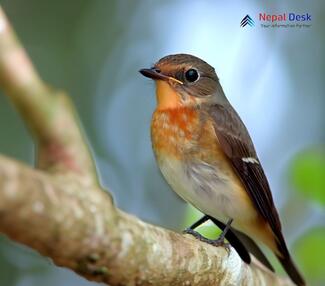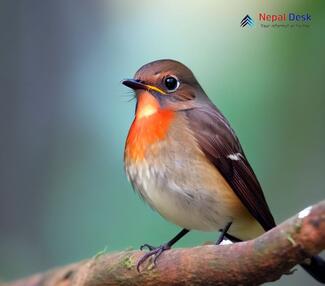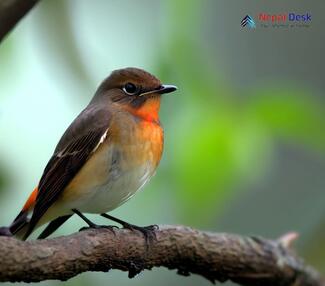The Red-throated Flycatcher (Ficedula albicilla) is a small yet fascinating bird that makes its home across continents. They are widely distributed from East Asia to Europe’s eastern and southeastern regions. This article delves into the taxonomy, physical features, habitat, and diet of the Red-throated Flycatcher, highlighting its presence in Nepal and an interesting point about this captivating species.
Taxonomy and Physical Features
The Red-throated Flycatcher belongs to the family Muscicapidae and is a member of the genus Ficedula. It has two recognized subspecies: Ficedula albicilla albicilla and Ficedula albicilla taiga. Closely related to the European Pied Flycatcher and the Collared Flycatcher, these bird species often interbreed.
A small-sized bird, the Red-throated Flycatcher measures approximately 12-13 centimeters (4.7-5 inches) in length with a wingspan ranging from 21 to 24 centimeters (8 – 9 inches). Adult males flaunt striking colors with bright orange-red throats during breeding seasons. The rest of their plumage is blackish-brown on top and white underneath. Meanwhile, females exhibit a more muted brown color with lighter underparts.
Habitat and Diet
The Red-throated Flycatcher dwells primarily in deciduous and mixed forests across its range. Ideal nesting locations for this species include tree cavities or nest boxes close to forest edges or near heavily vegetated areas where they can hunt for food. The migratory birds winter mostly across Southeast Asia.
Insects form the predominant diet for Red-throated Flycatchers. Their preferred hunting method involves perching patiently on a tree branch and launching an ambush to catch aerial prey in flight. Common targets include butterflies, moths, flies, and other small insects that abound in their habitat.
Presence in Nepal
Nepal's diverse landscape provides an ideal home for the Red-throated Flycatcher. Bird enthusiasts can spot them in numerous parts of the country, including the Kathmandu Valley from April to May during their migration period and from late August to October when they return to their winter habitats. Pokhara, Chitwan, and Bardia National Parks also offer excellent viewing opportunities.
Interesting Point:
Aside from its striking plumage, the Red-throated Flycatcher has a complex song consisting of short chirps and trills that makes it easily identifiable in a crowded canopy. Interestingly enough, males mimic the songs of other species to profess their territorial claim while wooing potential mates with their unique repertoire.
In conclusion, the Red-throated Flycatcher is an immensely intriguing species that captivates bird enthusiasts worldwide. With its inherent beauty and fascinating behavior patterns, this tiny bird is truly worth taking a moment to appreciate amidst Nepal's rich avian diversity.




